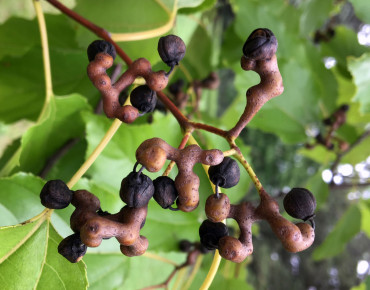Transcaucasian birch
Betula medwediewii
Description
Transcaucasian birch - Medwediew's birch - Betula medwediewii
Description and characteristics
Betula medwediewii is a small tree or medium-sized shrub, typically reaching a height of 6 to 10 m (20 to 33 ft) tall and 5 m (16 ft) spread when mature. Its habit is often pyramidal when young, becoming more spreading and rounded with age. This birch is particularly appreciated for its leaves, which are strikingly similar to those of the black alder. The leaves are broad, oval, with serrated edges and deeply marked veins. In autumn, they take on a beautiful golden yellow hue, adding a splash of colour to the garden. The yellow to bronze bark exfoliates with age.
Hardiness
The Transcaucasian birch is a hardy species, able to withstand temperatures down to -20°C. This resistance to cold makes it an ideal choice for temperate climates and regions prone to harsh winters.
Flowering and fruits
Betula medwediewii flowers in May. Both male and female flowers appear in the form of catkins. The male catkins are long and pendulous, measuring up to 10 cm, while the female catkins are shorter and erect. After flowering, the tree produces fruits in the form of yellow-brown strobili, measuring about 4 to 4.5 cm long.
Growing Betula medwediewii in your garden requires some specific care to ensure healthy and vigorous growth:
-Planting: Plant your birch in a sunny or partially shaded area with well-drained soil. Transcaucasian birch prefers slightly acidic to neutral soils. The best time to plant a birch is in the fall or very early spring.
-Watering: Water young trees regularly to encourage rooting. Once established, birch trees require less watering, except during periods of prolonged drought.
-Pruning: Prune the tree in winter to remove dead, tangled or diseased branches and to promote good structure. Light pruning in summer can also help improve air circulation and light penetration.
-Fertilizing: Apply a balanced fertilizer in spring to support growth. Well-rotted compost can also be beneficial.
-Disease protection: Betula medwediewii is relatively disease resistant, but it can be susceptible to certain fungi and insects. Inspect your tree regularly and treat it with appropriate products if necessary.
Tips and Tricks
-Location: Choose a sheltered location to protect the tree from strong winds that can damage the branches.
-Mulching: placing mulch at the base of the plantations is always a valuable aid to maintain humidity in case of drought and high heat, as well as to limit the growth of unwanted plants. It can consist of lawn clippings, dead leaves, wood chips, shredded hemp or straw.
-Thinning: Thin out the interior branches to improve air circulation and reduce the risk of fungal diseases.
Features
- Common name : Transcaucasian birch - Caucasian birch - Medwediew's birch
- Family : Betulaceae
- Category : tree
- Spread : 5 m
- Foliage : deciduous
- Fruit : yellow-brown strobiles 4 cm
- Use : isolated - shrubbery - hedge
- Soil : all
- Habit : Rounded
- Enemies : aphids - caterpillars
- Possible diseases : rust disease - powdery mildew - armillaria
Expédition & livraison
How does the delivery work?
 As soon as you place your order your plants are selected
As soon as you place your order your plants are selected Each order is processed individually.
Each order is processed individually. Plants are packed, staked and labeled.
Plants are packed, staked and labeled. Packaging is carefully implemented to avoid any problems.
Packaging is carefully implemented to avoid any problems. Packages are ready to be shipped.
Packages are ready to be shipped.
Our delivery methods
Shipping of our plants throughout Europe (except overseas and islands).
Customer reviews























